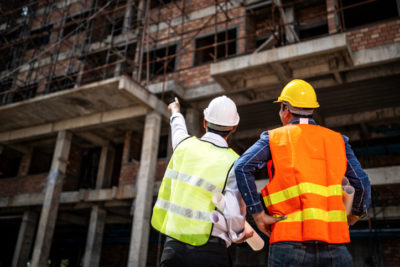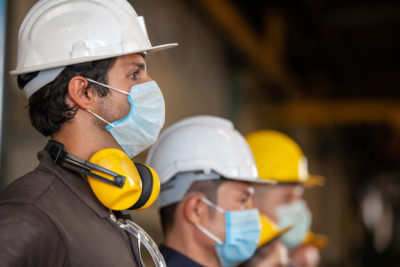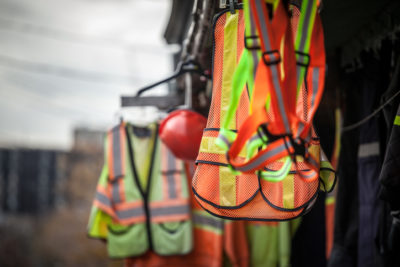
NBC News recently published a story looking at the current situation of UPS delivery workers as the COVID-19 crisis intensifies. According to the news report, there is an increasing level of frustration among the employees and union representatives who claim that their employers are keeping them in the dark. This has resulted in heightened fear and anxiety among the country’s 600,000 or so essential workers. Because of their employers’ refusal to share crucial information on which employees have been diagnosed with or have died from COVID-19, employees claim that this has left them vulnerable in their workplace.
This situation is not unique to UPS delivery workers. In the face of the uncertainty that the coronavirus outbreak has brought, not every company is well-equipped to adapt to the changes needed to tackle it. It is fair to say that we were all caught off guard by how widespread the impact of this health crisis is on business operations. The absence of information both internally and externally will only exacerbate the fears of employees.
 Over the past few weeks, governments all around the world have implemented strict measures including social distancing and stay-at-home orders to slow down the spread of COVID-19. As a consequence, all sectors of business had to conduct operations with a limited capacity, with some needed to halt completely.
Over the past few weeks, governments all around the world have implemented strict measures including social distancing and stay-at-home orders to slow down the spread of COVID-19. As a consequence, all sectors of business had to conduct operations with a limited capacity, with some needed to halt completely.
The construction industry, however, is one of the sectors that are declared essential by the federal and state governments. Unfortunately, construction contractors will have to deal with the impact of COVID-19 on operations, including supply chain disruptions, delays in schedule, reduction of the workforce, and decrease in productivity due to on-site health and safety measures. Not to mention the delays in acquiring permits, unavailability of financing, and cash flow shortage. In order for construction businesses to survive the threat of the COVID-19 pandemic, business owners need to adapt to the changes as quickly as possible.
As you take a look at your business continuity plans, it is important to prioritize employee communication, especially with many states declaring construction workers as “essential.” Here are some of the ways you can enhance employee communications during the COVID-19 crisis.
1. Create a Dedicated COVID-19 Communications Team
What we have right now are extraordinary situations that call for managers and employees to go above and beyond their designated day-to-day roles.
 To enhance employee communication, company leaders need to create a dedicated COVID-19 communication and response team that is responsible for disseminating and maintaining a repository of information about the company’s actions addressing this health crisis. This team should be composed of people from different departments who will lead the contingency and safety efforts of the company.
To enhance employee communication, company leaders need to create a dedicated COVID-19 communication and response team that is responsible for disseminating and maintaining a repository of information about the company’s actions addressing this health crisis. This team should be composed of people from different departments who will lead the contingency and safety efforts of the company.
This COVID-19 communication and response team should be responsible for ensuring the health and safety of all construction employees, especially with their ability to perform their roles during the crisis. They will be responsible for enabling employees who can work remotely to do so and slow down the virus’s spread.
Additionally, they should develop a contingency plan in case things go awry, especially as supplies dwindle and the health crisis stresses your company’s finances. With payment issues continually affecting the construction industry, it is crucial now more than ever to stay on top of finances to ensure business continuity. The team will be tasked to define scenarios in the context of the company’s current financials, identify aspects of the business processes that will affect liquidity, and create recommendations to stabilize the company enough to weather the crisis.
More importantly, they should be tasked to communicate to their relevant constituencies what your communications team has been working on and what their decisions are moving forward. They should be transparent in telling employees the company’s current situation, especially if the organization cannot handle prolonged financial stress. Aside from this, the team should disclose immediately if there are any cases of COVID-19 in the workplace and discuss the steps that need to be taken to address them.
2. Establish a Regular Flow of Communication
Effective communication has always been one of the ingredients of a successful construction project. Because a single project can have multiple contractors, suppliers, and stakeholders, project managers need to be able to properly coordinate the activities of the participants through a steady flow of information. You can enhance employee communication by establishing a steady rhythm through a regular schedule known to all will ensure that everybody is on the same page as they go about their work on the construction site.
 In the same vein, having a regular flow of communication with your employees is crucial in this trying time. Because of the uncertainty of the situation, there are plenty of things that can change rapidly which you need to communicate immediately to your employees. Company leaders need to provide accurate and up-to-date information about internal policies and decisions made by upper management.
In the same vein, having a regular flow of communication with your employees is crucial in this trying time. Because of the uncertainty of the situation, there are plenty of things that can change rapidly which you need to communicate immediately to your employees. Company leaders need to provide accurate and up-to-date information about internal policies and decisions made by upper management.
Ideally, you want employees to know when you are meeting with other company leaders as well as the COVID-19 response team about the situation and update them afterward. Inform them through multiple channels — phone, email, or video chat — about your decisions. Make this a regular occurrence with a specific schedule so that employees know when to expect updates.
3. Promote Safety Steps in the Workplace
On all construction sites, safety is the number one priority. Construction contractors are no strangers to the dangers of working in the industry. All project participants account for all safety risks and address them during the initial stages of the project. But with COVID-19 emerging across the globe, a new type of health and safety risk has materialized which project managers need to manage.

Unfortunately right now, there is no vaccine to prevent COVID-19. However, there are several steps that you can take at work to prevent infection by avoiding exposure to the virus. Frequent hand washing is still one of the best ways to avoid contamination, so ensure that there are adequate facilities where employees can wash their hands. Rubbing alcohol and hand sanitizers should also be available to employees as an alternative to hand washing. Provide workers too with waste bins lined with plastic bags where they can throw in soiled tissue papers and masks. Finally, there should be routine cleaning of frequently touched surfaces such as heavy equipment controls, hand tools, door handles, and countertops.
These steps can only be effective if they are properly communicated to employees. To enhance employee communication on health and safety practices, you should use every means at your disposal to disseminate information. Put up posters, send memos, and send emails through your internal communication system to all of your employees. You can even create a central hub of information on your company intranet that employees can access for updated information from the WHO and the CDC.
4. Use Rewards to Motivate and Encourage Safe Practices
Another way to ensure that employees observe safety practices in the workplace and improve their motivation to work at home is to incorporate them into your rewards and recognition platform. Having a formal rewards and recognition program in your workplace lets you incentivize desired behavior and improve the productivity of your employees.
 In this current health crisis, you can reinforce safety from COVID-19 contamination through public recognition of those who observe guidelines and rewarding them with thousands of items and gift cards. This not only makes complying employees feel good about their work, but it also encourages their colleagues to do the same.
In this current health crisis, you can reinforce safety from COVID-19 contamination through public recognition of those who observe guidelines and rewarding them with thousands of items and gift cards. This not only makes complying employees feel good about their work, but it also encourages their colleagues to do the same.
In addition, it can be hard to stay engaged while working from home. The absence of colleagues in a work-from-home setting, as well as the numerous distractions present at home, does not make a conducive environment for work. By setting up a reward system for work performance during the stay-at-home orders, you can motivate employees to restore their level of productivity as if they were in the office.
5. Allay Employees’ Anxieties and Fears
Aside from the impact of the COVID-19 crisis on business operations, the current situation has been emotionally taxing for a lot of people. Everybody’s day-to-day life has changed in unprecedented ways. Continuing business operations as usual is no longer an option. For this reason, company leaders need to recognize employees’ anxieties and give them reassurance.
 When addressing employees about the current situation, it is important that you demonstrate an understanding of it and what it means to your employees. There will be fears, especially with some construction work in danger of postponement. You need to be able to anticipate their reactions and questions and answer them in a way that they will deem satisfactory. More importantly, you should manage their misconceptions and allay their fears through the timely dissemination of correct information.
When addressing employees about the current situation, it is important that you demonstrate an understanding of it and what it means to your employees. There will be fears, especially with some construction work in danger of postponement. You need to be able to anticipate their reactions and questions and answer them in a way that they will deem satisfactory. More importantly, you should manage their misconceptions and allay their fears through the timely dissemination of correct information.
As your company grapples with the threat of COVID-19, it is understandable that you yourself may not be well-equipped to handle the situation. The rapid spread of the coronavirus outbreak has left all organizations scrambling to protect their businesses. With the disruption likely to last for many months, companies need to act now. And the foundation of a successful response to the COVID-19 outbreak is transparent, authentic, and empathetic employee communication.
 Patrick Hogan is the CEO of Handle.com, where they build software that helps contractors, subcontractors, and material suppliers with late payments. Handle.com also provides funding for construction businesses in the form of invoice factoring, material supply trade credit, and mechanics lien purchasing.
Patrick Hogan is the CEO of Handle.com, where they build software that helps contractors, subcontractors, and material suppliers with late payments. Handle.com also provides funding for construction businesses in the form of invoice factoring, material supply trade credit, and mechanics lien purchasing.
